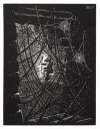Gunther
Uecker
Gunther Uecker, a German Avant-Garde artist, is renowned for his nail reliefs, which explore texture and form. If you're looking for original Gunther Uecker prints and editions for sale, or wish to sell, request a complimentary valuation and browse our network's most in-demand works.
Notable series
Gunther Uecker art for sale
Discover Gunther Uecker prints for sale, exclusively available through our private network of collectors. Explore signed and unsigned screenprints, lithographs, digital prints, and rare editioned proof prints by era-defining blue chip artists.
Sell Your Art
with Us
with Us
Join Our Network of Collectors. Buy, Sell and Track Demand
Biography
Born on 13th March 1930 in Wendorf, Mecklenburg, Uecker's early life was set against the backdrop of political upheaval and war. Despite this, his artistic talent emerged early, spurring him towards a career in the visual arts. His studies began at the Kunstakademie Wismar and continued at the Kunstakademie Berlin-Weissensee. He later moved to the West and attended the Kunstakademie Düsseldorf, where he was taught by Otto Pankok, whose teachings on form and expression influenced Uecker's oeuvre.
Through the 1950s, Uecker's artistic development saw him move from painting towards the integration of nails and other objects into his canvases, leading to his signature style. This tactile approach imbued his works with a kinetic energy and three-dimensional quality, creating visual structures that transcend their material parts. His efforts culminated in his renowned series of nail paintings, where the interaction of light and shadow across the nailed surfaces generates a sense of movement and vitality.
The nail paintings, characterised by their intricate play of light and shadow, invite viewers to engage with the artwork from multiple perspectives. The repetitive act of hammering nails into surfaces became a meditative process for Uecker, symbolising destruction and healing. This duality is a consistent theme in his work, reflecting the artist's exploration of the human condition.
Uecker's impact was further cemented by his association with the influential ZERO group in 1961, alongside artists Heinz Mack and Otto Piene. The group's aim to redefine art in the aftermath of World War II resonated with Uecker, leading to collaborations defined by exploration of light, space, and unconventional materials.
Printmaking is a significant part of Uecker's oeuvre. His 2018 terragraph series titled Ouroboros presents gestural sweeps of colour which exude the liveliness of his three-dimensional nail paintings. Uecker's distinctively energetic prints are a testament to his ability to form an artistic signature that is recognisable across different media.
Uecker's legacy is one of innovation. The artist's manipulation of unconventional materials and exploration of the interplay between light and structure have inspired subsequent generations of artists. His art not only captures the viewer's gaze but also stimulates a deeper contemplation of the human condition, cementing his status as an artist whose work continues to resonate and provoke thought in the landscape of Contemporary Art.

































